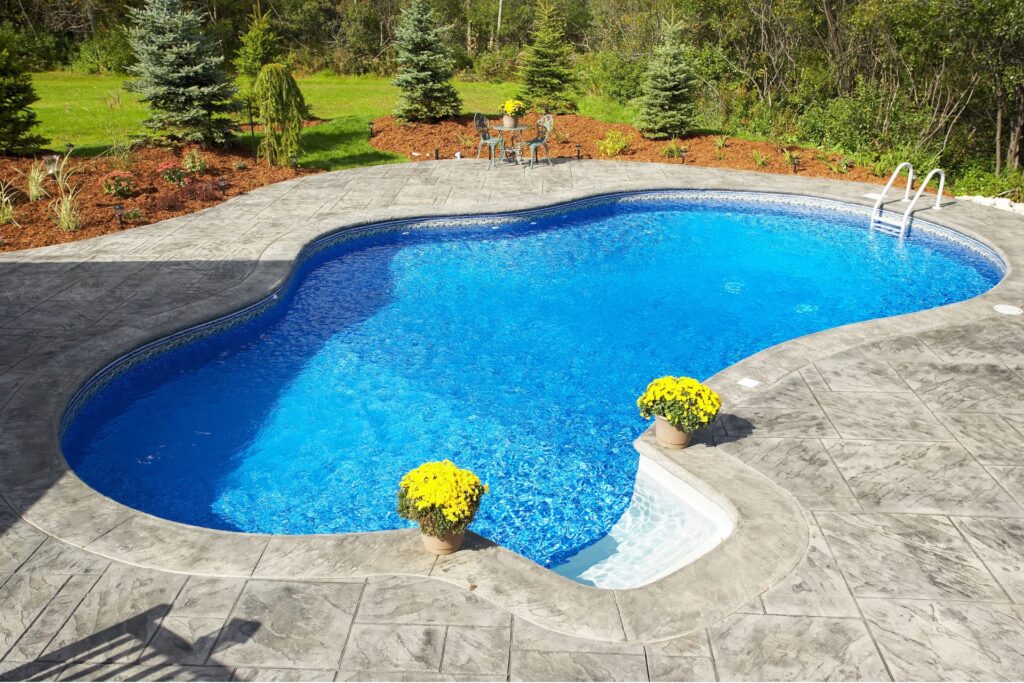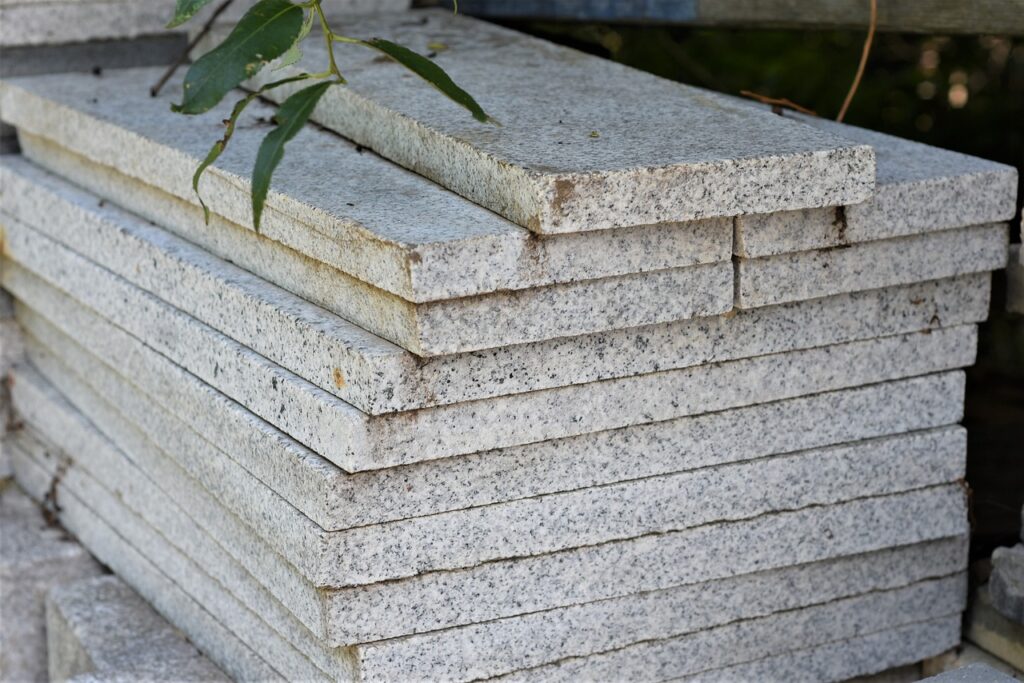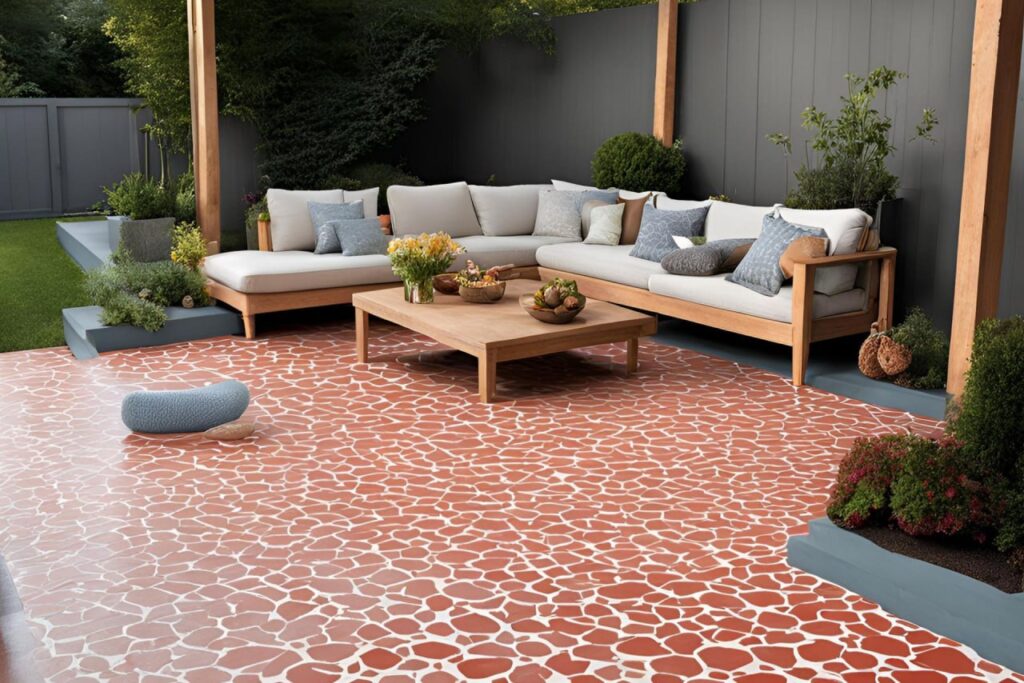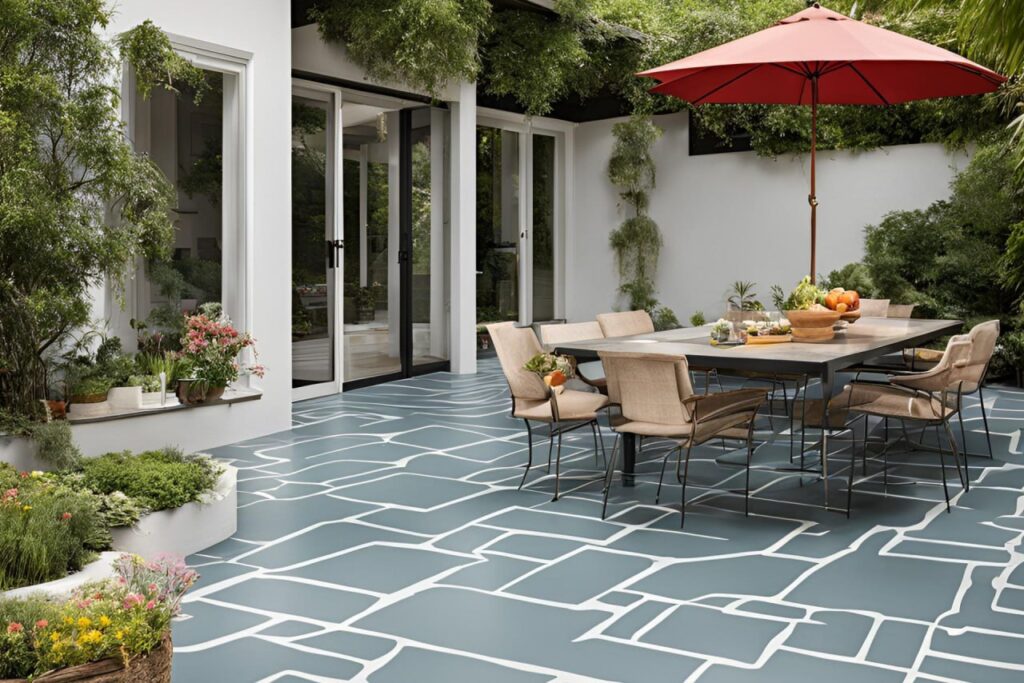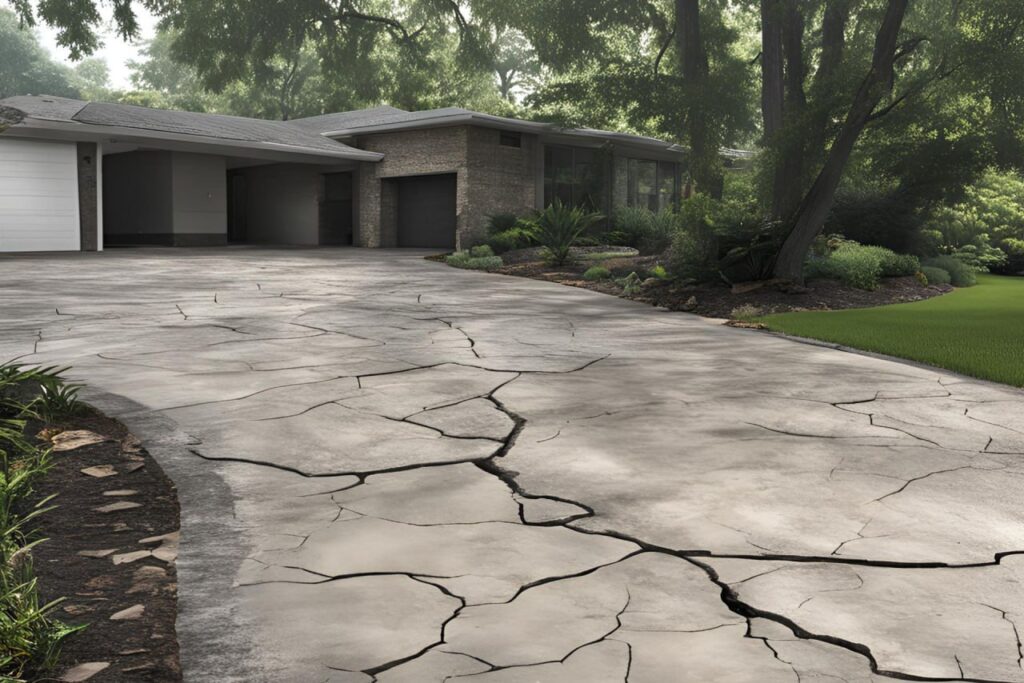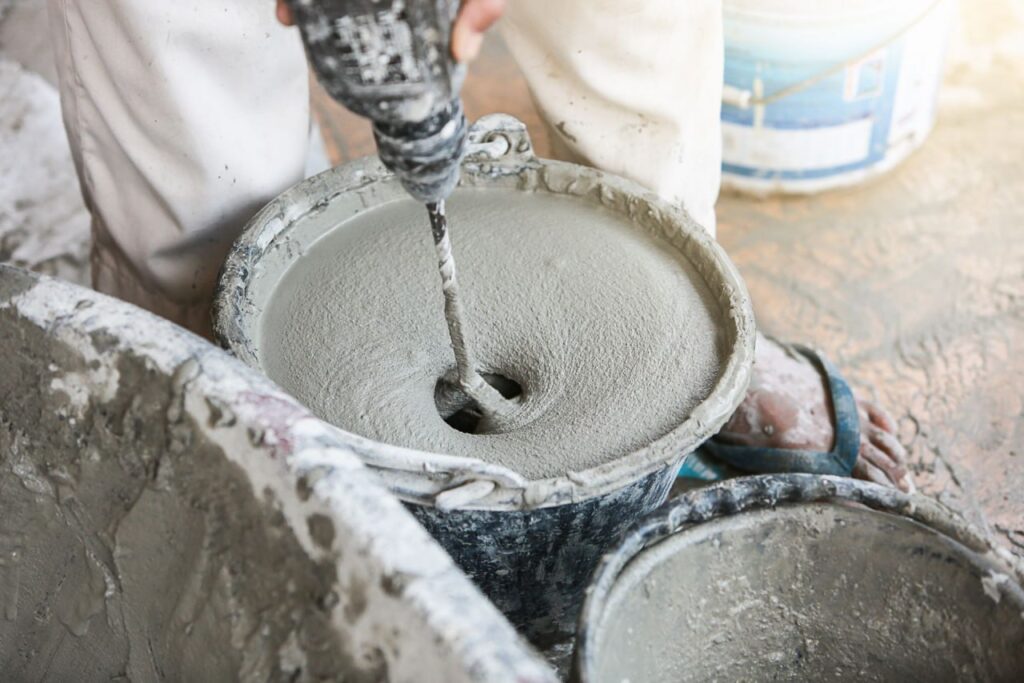Welcome to your ultimate guide on understanding how often you need to reseal your concrete pool surround. Whether you’re a new pool owner or have enjoyed your backyard oasis for years, maintaining the integrity and beauty of your pool area is essential. Resealing your concrete surround not only protects against water damage, UV rays, and chemical exposure but also enhances the overall appearance and longevity of your pool space. In this blog, we’ll delve into the importance of resealing, how to identify when it’s needed, and the steps to ensure your pool surround remains in top condition, ensuring you enjoy a safe and stunning pool area for years to come.
On average, you should reseal your concrete pool every 2-5 years. This helps protect against water damage, UV rays, and chemical exposure, ensuring your pool area remains durable and visually appealing. Factors such as climate, pool usage, and the quality of the initial sealant can influence the exact timing.
- Understanding Concrete Pool Surrounds
- The Importance Of Resealing
- Signs That Your Pool Surround Needs Resealing
- How Often Should You Reseal?
- Steps To Reseal Your Concrete Pool Surround
- DIY Vs. Professional Resealing
- Maintenance Tips To Extend The Life Of Your Sealant
- FAQs: About How Often Will I Need To Reseal My Concrete Pool Surround
- Conclusion
- Find A Professional Concrete Company Near You!
Understanding Concrete Pool Surrounds
A concrete pool surround, often called pool decking or a pool patio, is the area around your swimming pool made from concrete. This surround provides a safe, non-slip surface for swimmers and adds to your pool area’s aesthetic appeal. Concrete is a popular choice for pool surrounds due to its versatility in design and durability.
Benefits
- Durability: One of the most significant advantages of a concrete pool surround is its durability. Concrete can withstand various weather conditions, heavy foot traffic, and the occasional rough play that might occur around a pool. When properly sealed and maintained, concrete pool surrounds can last for many years without significant damage.
- Aesthetics: Concrete pool surrounds offer immense aesthetic flexibility. They can be stamped, stained, or textured to mimic more expensive materials like stone, brick, or even wood. This means you can customize the look of your pool area to match your overall landscaping design or personal taste. Additionally, you can choose from a variety of colors and finishes to create a unique and appealing poolside environment.
- Low Maintenance: Concrete pool surrounds are relatively low maintenance compared to other materials. They don’t require frequent sealing or cleaning, and any necessary maintenance tasks are usually straightforward. With occasional cleaning and sealing, concrete can maintain its appearance and functionality for a long time. This ease of maintenance makes concrete a practical choice for busy homeowners.
Common Issues
- Cracking: One of the most common issues with concrete pool surrounds is cracking. This can occur due to various reasons such as settling of the ground beneath the concrete, extreme temperature changes, or heavy loads. While minor cracks are usually not a structural concern, they can affect the appearance and may need to be repaired to prevent further damage.
- Staining: Concrete is porous, which means it can absorb liquids and become stained. This is especially true around a pool where water, chlorine, and other chemicals are frequently present. Stains from leaves, algae, or spills can also occur. While sealing the concrete can help prevent staining, it’s important to clean up spills and debris promptly to maintain the appearance of your pool surround.
- Wear and Tear: Over time, concrete pool surrounds can show signs of wear and tear. This can include surface abrasions, fading of color, and general weathering from exposure to the elements. Regular maintenance, such as resealing the surface, can help mitigate these effects and keep your pool surroundings looking fresh and new.
In conclusion, understanding the aspects of concrete pool surrounds can help you make informed decisions about their installation and maintenance. The durability, aesthetic flexibility, and low maintenance requirements make concrete a popular choice for many homeowners. However, being aware of potential issues like cracking, staining, and wear and tear ensures that you can address these problems promptly, keeping your pool area safe and beautiful.

The Importance Of Resealing
Maintaining the condition of your concrete pool surround is essential for both its longevity and aesthetic appeal. Resealing plays a crucial role in this maintenance process, offering numerous benefits that extend beyond just keeping your pool area looking good.
Protection
One of the primary reasons to reseal your concrete pool surround is to protect it from the elements. Concrete, while durable, is porous and can absorb water, which leads to cracking and deterioration over time. Resealing creates a protective barrier that prevents water from penetrating the surface, thus reducing the risk of water damage. Additionally, resealing safeguards the concrete from the harmful effects of UV rays. Prolonged exposure to sunlight can cause the concrete to fade and weaken, but a quality sealant acts like sunscreen for your pool surround, maintaining its strength and color. Moreover, pools are often exposed to various chemicals, whether from pool treatments or accidental spills. Resealing helps to protect the concrete from chemical exposure, preventing stains and damage that can compromise its integrity.
Enhancing Appearance
Another significant benefit of resealing is the enhancement of the pool area’s appearance. Over time, concrete can become dull and discolored due to exposure to the elements and regular wear and tear. Resealing revitalizes the surface, bringing out the natural beauty of the concrete and giving it a fresh, clean look. It can also enhance any decorative elements, such as stamped patterns or colored concrete, making them more vibrant and appealing. A well-maintained pool surround not only looks better but also adds to the overall appeal of your outdoor space, making it a more enjoyable area for relaxation and entertainment.
Preventing Damage
Preventative maintenance is always better than reactive repairs, and resealing your concrete pool surround is an excellent way to prevent long-term damage. By creating a barrier against moisture, UV rays, and chemicals, resealing helps to preserve the structural integrity of the concrete. This preventive measure reduces the likelihood of cracks, spalling, and other forms of damage that can be expensive to repair. Regular resealing extends the lifespan of your pool surround, ensuring that it remains in good condition for years to come. This not only saves you money on potential repairs but also maintains the safety and usability of your pool area.
In conclusion, resealing your concrete pool surround is a vital part of its maintenance. It offers protection from water damage, UV rays, and chemical exposure, enhances the appearance of your pool area, and prevents long-term damage that can lead to costly repairs. By investing in regular resealing, you can enjoy a beautiful, durable, and long-lasting pool surround that enhances your outdoor living space.

Signs That Your Pool Surround Needs Resealing
Visual Cues
One of the first signs that your pool surround might need resealing is noticeable visual changes. Over time, the vibrant color of your concrete pool surround can fade due to constant exposure to sunlight, water, and pool chemicals. This fading is a clear indication that the sealant has worn off, and the concrete is unprotected. Additionally, you might observe cracks forming on the surface. These cracks can range from tiny hairline fractures to more significant splits, all suggesting that the sealant is no longer providing adequate protection. Another visual cue is a dull appearance. If your once shiny and smooth pool surround now looks lackluster, it is a sign that the sealant has deteriorated and needs reapplication.
Water Absorption Test
Performing a water absorption test is an easy and effective way to determine if your pool surround needs resealing. To conduct this test, you will need a small amount of water and a few minutes of your time. First, clean a small area of the concrete surface and let it dry completely. Next, pour a small amount of water onto the dry concrete. Observe how the water behaves. If the water beads up and remains on the surface, your sealant is still intact and doing its job. However, if the water quickly soaks into the concrete, this indicates that the sealant has worn off, and it’s time for a reseal. This simple test helps you assess the sealant’s effectiveness and can be done periodically to ensure your pool surround is always well-protected.
Texture Changes
Changes in the texture of your pool surround are another indicator that resealing is necessary. When the sealant is in good condition, your concrete surface will feel smooth and slightly slick to the touch. Over time, as the sealant wears off, you might notice the texture becoming rougher and more abrasive. This change can be felt when you walk barefoot around the pool or run your hand over the surface. A rough texture not only indicates that the sealant is wearing off but also increases the risk of injury from slips and falls. Therefore, if you notice significant changes in the texture of your pool surround, it is a clear sign that resealing is required to maintain both the appearance and safety of your pool area.
By keeping an eye on these visual cues, performing regular water absorption tests, and paying attention to texture changes, you can effectively determine when your pool surround needs resealing. Regular maintenance not only enhances the aesthetic appeal of your pool area but also extends the life of your concrete, ensuring a safe and enjoyable environment for you and your family.

How Often Should You Reseal?
General Guidelines
Resealing your concrete pool surround is a crucial maintenance task that helps preserve its appearance and structural integrity. Generally, you should reseal your concrete pool every 2-5 years. This timeline can vary based on several factors, but sticking to this general guideline helps ensure that your pool area remains safe, attractive, and durable.
Factors Influencing Frequency
Several factors can influence how often you need to reseal your concrete pool surround:
Climate
The climate in your region plays a significant role in determining how often you need to reseal. In areas with high sun exposure, UV rays can break down the sealant more quickly, necessitating more frequent resealing. Conversely, in regions with heavy rainfall or freeze-thaw cycles, water can seep into cracks and expand, causing damage to the concrete and the sealant. Therefore, if you live in a sunny, rainy, or cold climate, you might need to reseal closer to every 2-3 years.
Usage
The amount of use your pool sees also affects the resealing frequency. If your pool is a central hub of activity, with frequent foot traffic, water splashes, and pool chemicals, the sealant will wear down faster. Regularly hosting pool parties or having a large family that uses the pool often can mean you need to reseal more frequently, possibly every 2-3 years, compared to a pool that sees minimal use.
Quality of Initial Sealant
The type and quality of the initial sealant applied to your concrete pool surround can significantly impact how often you need to reseal. High-quality, professional-grade sealants generally last longer and provide better protection against the elements and wear and tear. If a high-quality sealant was used initially, you might extend the resealing interval to 4-5 years. However, if a lower quality or DIY sealant was used, you might need to reseal every 2-3 years to maintain optimal protection.
Expert Recommendations
Pool maintenance experts emphasize the importance of regular resealing to extend the life of your concrete pool surround and maintain its aesthetic appeal. According to professionals, adhering to a resealing schedule based on your specific conditions, climate, usage, and initial sealant quality is essential. They also recommend inspecting your pool surround annually for signs of wear, such as fading, cracking, or water penetration. If any of these signs are present, it might be time to reseal, even if it hasn’t been 2-5 years yet.
By following these guidelines and considering the specific factors that affect your pool, you can keep your concrete pool in excellent condition for years to come. Regular resealing not only enhances the look of your pool area but also protects your investment from long-term damage.

Steps To Reseal Your Concrete Pool Surround
Preparation
The first and most crucial step in resealing your concrete pool surround is preparation. This involves thoroughly cleaning the surface to remove dirt, algae, and any existing sealant residue. Use a pressure washer or a stiff-bristled brush along with a concrete cleaner to ensure the surface is spotless. After cleaning, inspect the entire pool for any cracks or damage. Repair any cracks with a concrete patching compound and allow it to fully cure before proceeding. Proper preparation is essential to ensure the new sealant adheres well and provides lasting protection.
Choosing the Right Sealant
Selecting the right sealant for your pool surround can make a significant difference in the longevity and appearance of your concrete. There are several types of sealants available, including acrylic, epoxy, and polyurethane. Acrylic sealants are cost-effective and easy to apply but may not last as long in high-traffic areas. Epoxy sealants offer excellent durability and chemical resistance, making them ideal for pool areas, but they can be more challenging to apply. Polyurethane sealants provide a balance of durability and flexibility, making them suitable for areas with temperature fluctuations. Consider factors such as UV resistance, slip resistance, and the specific requirements of your pool surround when choosing a sealant.
Application Process
Applying the sealant correctly is vital to achieving a smooth and protective finish. Here is a step-by-step guide to the application process:
1. Test the Sealant: Before applying the sealant to the entire area, test it on a small, inconspicuous section to ensure compatibility and desired appearance.
2. Mix the Sealant: If required, mix the sealant thoroughly according to the manufacturer’s instructions. Some sealants come ready to use, while others may need to be mixed with a catalyst.
3. Apply the First Coat: Using a roller or sprayer, apply the first coat of sealant evenly across the surface. Work in small sections to ensure complete coverage and avoid pooling.
4. Allow to Dry: Let the first coat dry completely. This can take anywhere from a few hours to overnight, depending on the sealant type and weather conditions.
5. Apply Additional Coats: For added protection, apply one or two additional coats of sealant, allowing each coat to dry fully before applying the next.
Drying and Curing
Proper drying and curing are essential for the sealant to provide optimal protection and durability. The drying time can vary based on the type of sealant, ambient temperature, and humidity levels. Generally, it takes 24 to 48 hours for the sealant to dry to the touch, but full curing can take up to a week. During this period, it is crucial to keep the pool free from foot traffic, water, and debris. Use barriers or signage to prevent accidental damage while the sealant cures. Once fully cured, the sealant will enhance the appearance of your concrete pool surround, making it easier to clean and maintain.
By following these steps, you can ensure your concrete pool surround is resealed effectively, providing long-lasting protection and a fresh, attractive finish.

DIY Vs. Professional Resealing
When it comes to resealing your concrete pool surround, you have two main options: tackling the job yourself (DIY) or hiring a professional. Each approach has its own set of benefits and drawbacks, and the best choice depends on your specific circumstances and preferences.
Pros and Cons of DIY
Advantages of DIY Resealing
- Cost Savings: One of the most significant advantages of DIY resealing is the potential for cost savings. By doing the work yourself, you can avoid labor costs, which can be a substantial part of the overall expense.
- Flexibility and Convenience: When you handle the resealing project yourself, you have complete control over the schedule. This flexibility allows you to work at your own pace and fit the project into your timetable.
- Sense of Accomplishment: Completing a DIY project can provide a great sense of satisfaction. The hands-on experience and the knowledge that you improved your property can be very rewarding.
Challenges of DIY Resealing
- Skill and Knowledge Requirements: Resealing a concrete pool surround is not as simple as it might seem. It requires specific skills and knowledge to ensure the job is done correctly. Improper sealing can lead to premature wear and potential damage, which might end up costing more in the long run.
- Time-Consuming: DIY projects can be time-consuming, especially if you lack experience. The preparation, application, and curing times can add up, and mistakes can further prolong the process.
- Equipment and Material Costs: While labor costs are eliminated, you will still need to purchase or rent the necessary equipment and materials. These costs can add up and sometimes offset the savings from not hiring a professional.
When to Hire a Professional
Hiring a professional to reseal your pool surround might be the better option in several situations:
- Complex or Large Projects: If your pool surround is large or has intricate designs, hiring a professional can ensure the job is done efficiently and correctly. Professionals have the experience and tools to handle complex projects.
- Lack of Time or Interest: If you have a busy schedule or simply don’t enjoy DIY projects, hiring a professional can save you time and hassle. Professionals can complete the job faster and with less disruption to your daily life.
- High Stakes for Quality: For areas that require a high-quality finish and durability, professional expertise can make a significant difference. Professionals are skilled in achieving even, long-lasting results that can withstand the elements and regular use.
Cost Comparison
DIY Resealing Costs
When considering DIY resealing, the primary costs include:
- Materials: Sealant, cleaning supplies, patching materials.
- Equipment: Brushes, rollers, protective gear, and possibly renting specialized tools.
- Time: Your personal time investment, which could be spent on other activities or work.
Professional Resealing Costs
Professional resealing services typically include:
- Labor: The primary cost, which can vary depending on the complexity and size of the project.
- Materials: Professionals often use higher-quality materials that are included in their service costs.
- Guarantees: Many professionals offer warranties on their work, providing peace of mind.
Comparative Analysis
While DIY projects might initially seem cheaper, the potential for errors, additional material costs, and the value of your time can make professional services more attractive. On the other hand, for smaller, less complex projects, or if you have experience and enjoy DIY tasks, doing it yourself can be rewarding and cost-effective.
Ultimately, the choice between DIY and professional resealing comes down to balancing cost, time, and the importance of a high-quality finish. By carefully considering these factors, you can make an informed decision that best suits your needs and ensures the longevity and beauty of your pool.

Maintenance Tips To Extend The Life Of Your Sealant
Maintaining the longevity and effectiveness of your sealant is crucial for preserving the integrity of the surfaces it protects. Proper maintenance involves a combination of regular cleaning, avoiding harsh chemicals, and establishing a routine inspection. Below, we provide detailed tips on how to achieve this.
Regular Cleaning
Regular cleaning is vital to keep your sealant in top condition. Dust, dirt, and other debris can accumulate on the surface, which not only looks unsightly but can also lead to premature wear and tear.
- Gentle Cleaning Solutions: Use mild cleaning solutions specifically designed for the type of sealant and surface you have. Avoid using abrasive cleaners or tools that can scratch or damage the sealant.
- Soft Clothes and Brushes: Utilize soft cloths or brushes to gently clean the surface. This helps to remove dirt without causing damage to the sealant.
- Frequency: Aim to clean the sealed surfaces at least once a month. High-traffic areas might require more frequent cleaning to maintain their appearance and functionality.
Avoiding Harsh Chemicals
Certain chemicals can significantly shorten the lifespan of your sealant by breaking down its protective properties. To ensure your sealant remains effective:
- Read Labels: Always read the labels on any cleaning products before use. Avoid products containing harsh chemicals such as bleach, ammonia, or acidic substances, which can degrade the sealant.
- Natural Cleaners: Consider using natural cleaners like vinegar and water for a gentle yet effective cleaning solution. However, be cautious and test a small area first, as some sealants may still react to natural acids.
- Chemical Spills: In the event of a chemical spill on the sealed surface, clean it up immediately with a soft cloth and water. Quick action can prevent potential damage.
Inspection Routine
Regular inspections are key to catching and addressing potential issues with your sealant before they become major problems. Establishing a routine inspection can save you time and money in the long run.
- Monthly Inspections: Set a reminder to inspect the sealed surfaces once a month. Look for any signs of wear, cracks, or peeling that could indicate the sealant is failing.
- Detailed Examination: Pay close attention to edges and corners, as these areas are more prone to damage. Use a flashlight if necessary to ensure no issues go unnoticed.
- Timely Repairs: If you notice any damage during your inspection, address it promptly. Small cracks or worn spots can often be repaired without needing to reseal the entire surface, thus extending the life of the original sealant application.
By following these maintenance tips, you can ensure that your sealant remains effective for a longer period, providing the necessary protection for your surfaces. Regular cleaning, avoiding harsh chemicals, and routine inspections are simple yet effective strategies to maintain the integrity and appearance of your sealed surfaces.

FAQs: About How Often Will I Need To Reseal My Concrete Pool Surround
Conclusion
In this blog post, we explored the essential aspects of maintaining and resealing concrete pool surrounds, starting with the importance of resealing and how often it should be done. We examined various sealers, their benefits, and drawbacks, and provided a step-by-step guide for a successful DIY resealing project. Additionally, we emphasized the significance of regular maintenance to prolong the life and appearance of your pool surround. Now that you’re equipped with this knowledge, take action by inspecting your pool surround for wear and tear and consider resealing if necessary. Whether you opt for a DIY approach or seek professional help, proactive maintenance will save you from costly repairs and keep your pool area safe and attractive. For further reading, check out our related articles on choosing the best sealer, resealing your concrete driveway, and maintaining your concrete patio.
Find A Professional Concrete Company Near You!
- Christchurch Concrete Services
- Concrete Contractors Nelson
- Concrete Contractors Tauranga
- Concrete Dannevirke
- Concrete Driveways Lower Hutt
- Concrete Driveways Upper Hutt
- Concrete Foundations Kapiti
- Concrete Layers Auckland
- Concrete Layers Cambridge
- Concrete Layers Hamilton
- Concrete Layers Invercargill
- Concrete Layers Kapiti
- Concrete Layers Leigh
- Concrete Layers Levin
- Concrete Layers Mangawhai
- Concrete Layers Matakana
- Concrete Layers Northland
- Concrete Layers Orewa
- Concrete Layers Palmerston North
- Concrete Layers Pukekohe
- Concrete Layers Rodney
- Concrete Layers Silverdale
- Concrete Layers Te Awamutu
- Concrete Layers Upper Hutt
- Concrete Layers Waikato
- Concrete Layers Warkworth
- Concrete Layers Wellington
- Concrete Layers Wellsford
- Concrete Manuwatu
- Concrete Services Rotorua
- Concrete Whangarei
- Hastings Concrete Company
- Hawkes Bay Concrete Company
- Napier Concrete Company
About the Author:
Mike Veail is a recognized digital marketing expert with over 6 years of experience in helping tradespeople and small businesses thrive online. A former quantity surveyor, Mike combines deep industry knowledge with hands-on expertise in SEO and Google Ads. His marketing strategies are tailored to the specific needs of the trades sector, helping businesses increase visibility and generate more leads through proven, ethical methods.
Mike has successfully partnered with numerous companies, establishing a track record of delivering measurable results. His work has been featured across various platforms that showcase his expertise in lead generation and online marketing for the trades sector.
Learn more about Mike's experience and services at https://theleadguy.online or follow him on social media:

